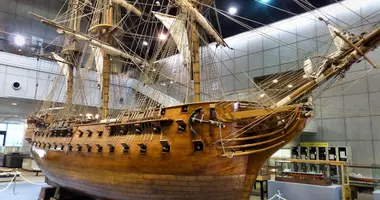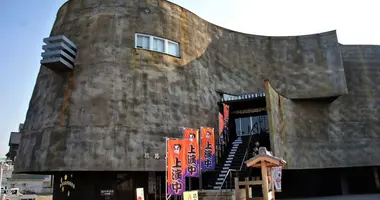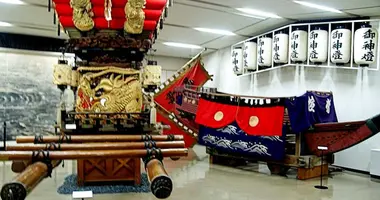Kobe Earthquake Memorial Museum: A tribute to resilience and disaster prevention
- Published on : 27/06/2024
- by : Japan Experience
- Youtube
On January 17, 1995, the city of Kobe was forever changed when a devastating earthquake struck at 5:46 am, claiming over 6,000 lives and destroying tens of thousands of homes. The Great Hanshin-Awaji Earthquake left an indelible mark on Japan's history, prompting a nationwide reassessment of disaster preparedness. In 2002, the Kobe Earthquake Memorial Museum opened its doors, serving as a poignant reminder of the tragedy and a beacon of hope for the future. This interactive museum not only commemorates the lives lost but also educates visitors about earthquakes and disaster prevention. As you step into this powerful tribute to resilience, prepare to be moved by the stories of survival, inspired by the city's recovery, and equipped with vital knowledge to face future challenges.
The Great Hanshin-Awaji Earthquake: A day that shook Kobe
The morning of January 17, 1995, began like any other for the residents of Kobe. However, at 5:46 am, the earth beneath their feet violently shook, forever altering the course of the city's history. The Great Hanshin-Awaji Earthquake, measuring 6.9 on the moment magnitude scale, struck with devastating force, its epicenter located just north of Awaji Island.
The earthquake's impact was catastrophic. Over 6,000 lives were lost, with the majority of casualties occurring in Kobe, the city closest to the epicenter. The scale of destruction was unprecedented, with more than 400,000 buildings damaged or destroyed. Iconic images of collapsed elevated highways and railway bridges became symbolic of the disaster's ferocity.
In the immediate aftermath, the city faced immense challenges. Basic services like electricity, water, and gas were disrupted, leaving hundreds of thousands of people without access to essential utilities. The earthquake also triggered approximately 300 fires, which raged through large portions of the city, compounding the devastation.
The Great Hanshin-Awaji Earthquake was Japan's most devastating seismic event since the Great Kanto Earthquake of 1923. It exposed vulnerabilities in Japan's infrastructure and disaster response systems, prompting significant changes in building codes and emergency preparedness strategies nationwide.
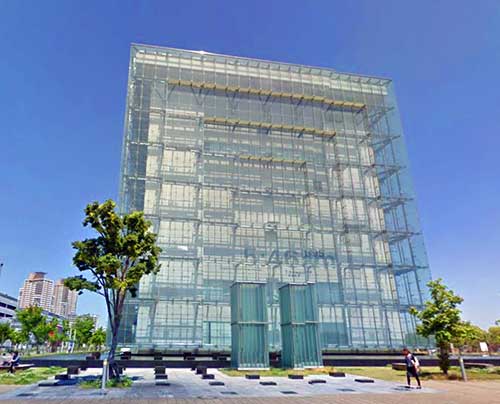
Kobe Earthquake Memorial Museum, Kobe, with the time of the earthquake 5.46 clearly visible on the exterior
Inside the museum: Reliving the earthquake and its aftermath
The Kobe Earthquake Memorial Museum, officially known as the Great Hanshin-Awaji Earthquake Memorial Disaster Reduction and Human Renovation Institution, offers visitors a powerful and immersive experience that brings the events of January 17, 1995, vividly to life. As you explore the museum, you'll encounter a carefully curated collection of exhibits that not only document the disaster but also pay tribute to the resilience of Kobe's residents.
Your journey through the museum begins on the 4th floor with a visit to the 1:17 Theater. Here, you'll watch a 7-minute video that recreates the sounds and images of the earthquake's devastation. The theater's large screen and special effects provide a visceral sense of the quake's power, allowing you to better understand the terror experienced by Kobe's residents that fateful morning.
After the video, you'll walk through a corridor filled with reconstructions of damaged buildings and infrastructure. These exhibits provide a tangible representation of the earthquake's destructive force, showcasing twisted metal, crumbled concrete, and shattered glass. As you move through this space, try to imagine the chaos and confusion that must have reigned in the immediate aftermath of the disaster.
On the 3rd floor, you'll find a wall panel featuring survivor testimonies, with a particular focus on the experiences of young children. These personal accounts offer a deeply moving perspective on the human impact of the disaster. The floor also houses interactive exhibits and dioramas that provide detailed information about the earthquake and its effects.
Throughout the museum, you'll have the opportunity to watch videos of survivors sharing their experiences. These firsthand accounts add a powerful human element to the exhibits, helping visitors connect emotionally with the events of that day. As you listen to these stories, consider how you might react in a similar situation. What would you do in those first crucial moments after a major earthquake?
Interactive learning: Disaster prevention and risk reduction
The Kobe Earthquake Memorial Museum goes beyond simply documenting the past; it serves as a vital educational resource for disaster prevention and risk reduction. The museum's interactive exhibits and workshops are designed to engage visitors of all ages, providing practical knowledge that could prove life-saving in future emergencies.
On the 2nd floor, you'll find exhibits and workshops focused on disaster management. These hands-on experiences allow you to learn about earthquake-resistant building techniques, emergency preparedness, and the importance of community cooperation during crises. As you explore these exhibits, ask yourself: How prepared am I for a natural disaster? What steps can I take to improve my own readiness?
The East Building's 3rd floor is dedicated to exploring the threats posed by wind and water disasters. Here, you can learn about typhoons, floods, and other natural hazards that Japan faces, as well as strategies for mitigating their impacts. Interactive games and simulations make the learning process engaging and memorable.
One of the museum's most popular features is the earthquake simulator, which allows visitors to experience the shaking intensity of both the 1995 Kobe Earthquake and the 2011 Tohoku Earthquake. This visceral experience drives home the importance of earthquake preparedness and helps visitors understand the difference in magnitude between these two significant events.
Throughout your visit, you'll have the opportunity to participate in workshops and demonstrations that teach practical skills for disaster situations. These might include how to secure furniture to prevent toppling during an earthquake, how to create an emergency kit, or how to safely evacuate a building. By actively engaging in these activities, you'll gain valuable knowledge that could make a real difference in a future crisis.
The museum's role in preserving memory and educating the public
The Kobe Earthquake Memorial Museum plays a crucial role in preserving the collective memory of the Great Hanshin-Awaji Earthquake and educating the public about disaster preparedness. Since its opening in 2002, the museum has welcomed over 9 million visitors, serving as a powerful tool for raising awareness about seismic risks and the importance of community resilience.
One of the museum's key functions is to document and share personal stories from survivors. Through its collection of diaries, photographs, and oral histories, the museum ensures that the experiences of those who lived through the disaster are not forgotten. The Storyteller's Corner provides a unique opportunity for visitors to hear firsthand accounts from earthquake survivors, creating a powerful emotional connection to the events of 1995.
The museum also serves as a hub for ongoing research and education in disaster prevention. As part of the larger Disaster Reduction and Human Renovation Institution, it collaborates with researchers, policymakers, and community leaders to develop and disseminate best practices in disaster risk reduction. This continuous learning and improvement process helps ensure that the lessons from the Kobe earthquake continue to inform disaster preparedness strategies both in Japan and around the world.
By presenting the earthquake's impact alongside information about recovery efforts and technological advancements in disaster prevention, the museum offers a message of hope and resilience. Visitors leave not only with a deeper understanding of the tragedy but also with inspiration drawn from Kobe's remarkable recovery and renewed commitment to building a safer future.
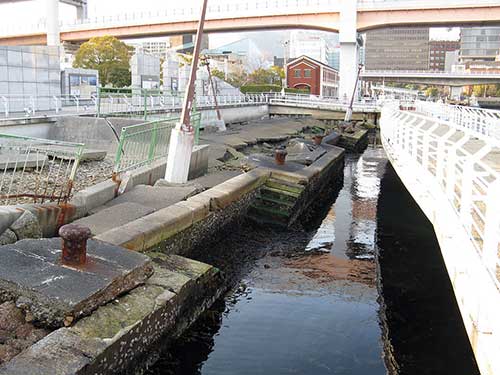
Preserved damage at the Earthquake Memorial Park
Visiting the Kobe Earthquake Memorial Museum: Practical information
If you're planning a visit to the Kobe Earthquake Memorial Museum, here's some essential information to help you make the most of your experience:
Location: The museum is situated in the HAT Kobe district, a new city area east of the city center. Its exact address is:
1-5-2 Wakinohama Kaigandori
Chuo-ku, Kobe
Hyogo Prefecture 651-0073
Access: The museum is easily accessible by public transportation. You can reach it by:
- Walking 10 minutes from Iwaya Station on the Hanshin Main Line
- Walking 15 minutes from Nada Station on the JR Kobe Line
- Taking Kobe City bus #29 from Sannomiya (runs once or twice an hour)
Opening hours:
- 9:30 am - 5:30 pm (last entry at 4:30 pm)
- July to September: 9:30 am - 6:00 pm (last entry at 5:00 pm)
- Fridays and Saturdays: 9:30 am - 7:00 pm (last entry at 6:00 pm)
Closed: Mondays (or the following day if Monday is a public holiday), December 31, and January 1
Admission fees:
- Adults: 600 yen
- University students: 450 yen
- High school students: 300 yen
- Junior high school and below: Free
Tips for your visit:
- Allow at least 2-3 hours to fully explore the museum
- Consider visiting on the 17th of each month when admission is free
- Check the museum's website for special events or temporary exhibitions
- Be prepared for an emotional experience, especially in the video theater and survivor testimony areas
Remember, the Kobe Earthquake Memorial Museum is more than just a tourist attraction; it's a place of remembrance, education, and hope. Approach your visit with respect and an open mind, ready to learn from this powerful testament to human resilience in the face of disaster.
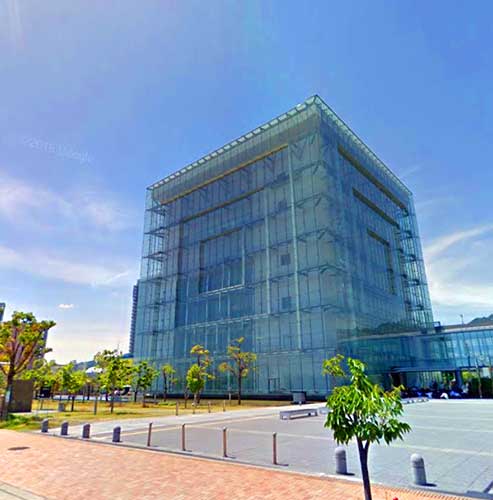
Kobe Earthquake Memorial Museum, Kobe
Beyond the museum: Exploring Kobe's recovery and resilience
After your visit to the Kobe Earthquake Memorial Museum, you might be inspired to explore more of Kobe and witness firsthand the city's remarkable recovery. Here are some suggestions for continuing your journey of discovery:
1. Meriken Park: This waterfront park features several memorials to the earthquake, including a preserved section of damaged harbor. The Kobe Maritime Museum in the park also touches on the earthquake's impact on the city's port.
2. Kobe Luminarie: If you're visiting in December, don't miss this annual light festival held in memory of the earthquake victims. The stunning illuminations symbolize hope and renewal.
3. Hyogo Prefectural Museum of Art: Located adjacent to the Earthquake Memorial Museum, this museum showcases art that reflects on the disaster and Kobe's recovery.
4. Rokko Island: This artificial island suffered severe liquefaction during the earthquake. Today, it's a thriving community that exemplifies Kobe's resilience.
5. Shin-Kobe Ropeway: For a panoramic view of the rebuilt city, take this cable car up Mount Rokko. The contrast between the modern cityscape and the surrounding nature is truly striking.
As you explore these sites, reflect on the incredible journey Kobe has undertaken since 1995. The city's ability to rebuild and reinvent itself while honoring its past is a testament to the strength and spirit of its people. What lessons can we all learn from Kobe's example of resilience in the face of adversity?
Remember, your visit to Kobe is not just about witnessing the aftermath of a disaster, but about celebrating the triumph of human spirit and community. As you walk the streets of this vibrant city, take a moment to appreciate the everyday resilience on display and consider how we can all contribute to building more disaster-resistant communities.
For those interested in learning more about Japan's history with natural disasters and recovery efforts, consider visiting other related sites such as the Edo-Tokyo Museum in Tokyo, which covers the city's recovery from the Great Kanto Earthquake, or the Tsunami Museum in Minamisanriku, which focuses on the 2011 Tohoku Earthquake and Tsunami.
Your journey through Kobe and its Earthquake Memorial Museum is sure to be a profound and moving experience. It's a powerful reminder of nature's force, human vulnerability, and our incredible capacity for resilience and renewal. As you leave Kobe, carry with you not just the memory of the disaster, but the inspiring story of a city reborn.
